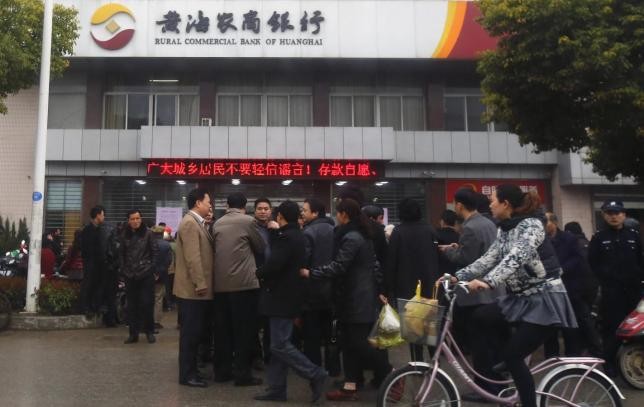The increasing level of bad debts in China's banking system will be revealed in the listing for the Bank of Jiangsu Ltd, a medium-sized lender, The Wall Street Journal reported.
The information is contained in the bank's 528-page prospectus approved this week and filed with the China Securities Regulatory Commission.
The prospectus shows how the bank coped up with the economic slowdown as it extended loans to manufacturers of pipes and construction materials.
According to the Bank of Jiangsu prospectus, its nonperforming loan ratio reached 1.3 percent last year, slightly above the average of 1.26 percent among the country's five largest lenders.
Analysts said that although this is low compared with the global level, the Bank of Jiangsu and other banks are aware that the rate of increase is high and the true percentage of nonperforming loans (NPLs) is bigger.
"The economy hasn't been doing that well in the past few years especially for the sectors that the bank is involved in," Ivan Shi, analyst for financial consultancy Z-Ben Advisors, was quoted as saying. "The more worrying issue is the continued growth of NPLs over the past few years."
In addition, the Bank of Jiangsu's bad debt ratio increased to 13 percent in 2014, after a 14-percent increase in the previous year. Bad debt also saw a sharp increase in 16 other large- and midsize lenders in the past two years, with China Industrial Bank Ltd posting the highest increase at 44.7 percent.
The extent of corporate indebtedness has caused a growing concern for economists and government officials who fear that lenders may run out of money for loans.
Dragon Tang, associate professor of finance at the University of Hong Kong, said that the rise in bad loans may be attributed to banks becoming more cautious and holding off loans even to credible borrowers.
"The real number (of bad loans) could be even higher, depending on whether they're doing things like extending loan maturities or evergreening the loan," Tang said.
For the country's largest lenders, the rise in bad loans was higher since it includes state-owned corporate debt.
Analyst said that the Bank of Jiangsu's move to list in Shanghai is seen as a test for lenders which are similarly debt-laden. Since the 2008 global financial crisis, Jiangsu is the first regional bank to try out for public offering.
The bank said it has taken measures to strengthen the scrutiny of loans. "In recent years, our bank has been continually increasing the intensity of write-offs, and accelerating the handling of nonperforming loans," its prospectus said.




























